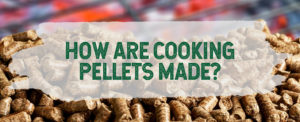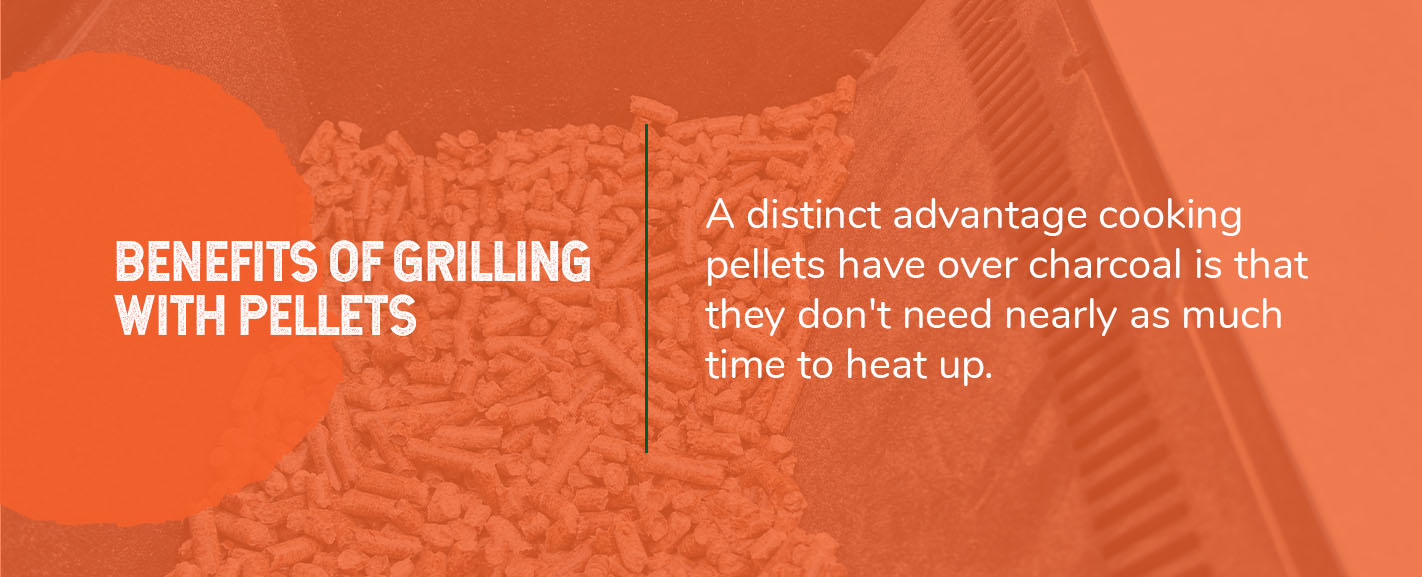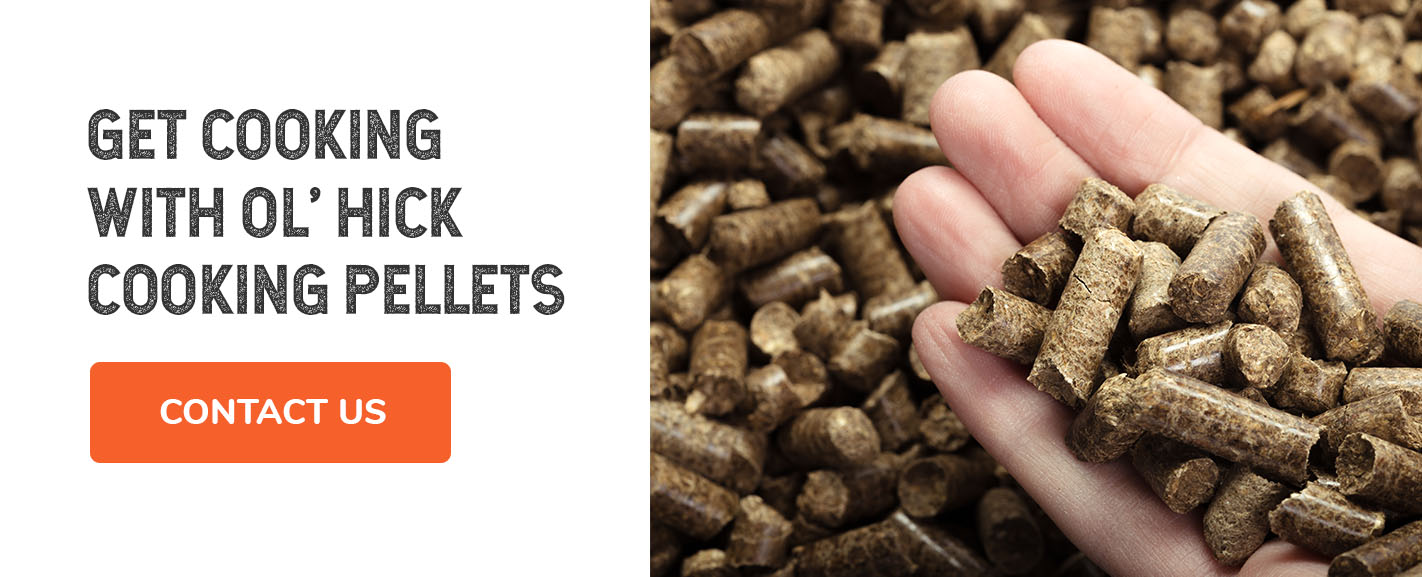How Are Grilling Pellets Made?

If you’re new to the world of grilling, you might find yourself wondering what the fuss is all about. Why are some people firmly in favor of charcoal grilling while others are in the propane camp? What do wood grilling pellets have to offer that charcoal or propane don’t?
In many ways, BBQ or grilling pellets offer a best of both worlds option when you’re manning the grill. They have some of the benefits of propane and some of the benefits of charcoal, with fewer drawbacks. To learn more about the difference, find out how grilling pellets are made.
- What Are Grilling Pellets?
- What Are Grilling Pellets Made Of?
- How Are Grilling Pellets Made?
- Can You Make Your Own BBQ Pellets
- Benefits of Grilling With Wood Pellets
- How Are Grilling Pellets Different From Heating Pellets?
- Get Cooking With Ol’ Hick Grilling Pellets
What Are Grilling Pellets?
Cooking pellets, sometimes called BBQ, grilling, or smoking pellets, are a type of fuel used to heat pellet grills. The pellets are thin rods, often about the thickness of a pencil. When burned, they produce a smoke that adds flavor to whatever you’re cooking on the grill. The heat from burning the pellets also helps the food cook.
Using grilling pellets is different from using wood logs to cook food. For one thing, grilling pellets consist of shaved wood and sawdust. The wood shavings and sawdust get compressed, which removes any moisture or air from the resulting pellets. Grilling pellets also don’t have dirt or bark, which might be present on logs. The absence of dirt and bark means that the pellets burn much more cleanly than wood logs.
What Are Grilling Pellets Made Of?
Grilling pellets are made from hardwood varieties, not softwood. Some popular wood species used to make grilling pellets include:
- Hickory
- Apple
- Cherry
- Oak
- Alder
The type of wood used to make the pellets influences the final flavor of the food cooked on the grill. Just as you might pair a certain type of wine with a certain type of meat, you might also pair a certain type of smoking pellet with a certain type of meat. Hickory pellets are very versatile and work well with beef, chicken, pork, and even vegetables. Apple cooking pellets pair well with chicken or pork. Alder or oak pellets work well with fish.
Whiskey fans can infuse their grilled foods with the taste of Jim Beam thanks to grilling pellets made from Jim Beam bourbon barrels. The wood of the barrels is 100% oak, making the pellets a great choice for fish, seafood, beef and vegetables.
How Are Grilling Pellets Made?
Grilling pellets are made by transforming trees, lumber scrap, sawdust, and wood chips into tiny, uniform pieces. Often, the first step in pellet production is to cut the wood down to size. Scrap lumber or tree trunks and branches can go into a wood chipper, which cuts the material into smaller pieces.
Some pellet plants don’t accept larger pieces of wood and instead start the process with wood chips and sawdust. The chips and sawdust go into the drum of a hammermill. When the mill operates, hammers swing against the drum, cutting the chips and sawdust down into even smaller pieces.
Once the wood is a uniform size, it might require drying to remove any moisture. Drying is a necessary step when the wood comes from freshly harvested trees.
Once sufficiently dry, the wood pieces go through a pellet mill, which shapes the material into long, thin rods. The high pressure used in the pellet mill causes the wood to produce lignin, a polymer that allows the wood dust and pieces to bind together. The length, thickness, or density of the finished wood pellets depends on the size of the die used in the pellet mill.
Once the pellets are shaped, they need time to cool down before going into packaging. Placing the pellets in a cooling tower reduces their temperature and hardens them. After they’ve thoroughly cooled, the pellets can go into bags or a storage silo.
Can You Make Your Own BBQ Pellets?
You might find DIY instructions for making grilling pellets at home. However, in most cases, the process is too complicated to perform at home. Making BBQ pellets involves purchasing specialized equipment, such as a pellet mill. For that reason, you’re better off purchasing grilling pellets and spending your time and energy getting creative on the grill.

Benefits of Grilling With wood Pellets
Grilling with cooking pellets offers a few advantages compared to grilling with charcoal or propane. A distinct advantage grilling pellets have over charcoal is that they don’t need nearly as much time to heat up. It can take up to half an hour for a charcoal grill to reach the right temperature for grilling. There’s also more of a learning curve when cooking on a charcoal grill.
While propane grills heat quickly and are easy to use even for people who are absolute beginners, they don’t add much flavor to the food you cook on them. The propane doesn’t produce flavorful smoke, so grillmasters who use it also miss out on the sought-after flavor produced by grilling pellets.
Grilling with pellets also lets you adjust the flavor you add to your food. As mentioned above, you can use pellets made from old bourbon barrels to infuse your grilled food with the flavor of whiskey.
How Are Grilling Pellets Different From Heating Pellets?
When you’re shopping for wood pellets, you’re likely to come across heating pellets and grilling pellets. While the processes used to make these pellets are similar, there are critical differences between the two. It’s fine to use grilling pellets for heating fuel, but in most cases, it’s not a good idea to use heating pellets on your grill.
Manufacturers use different types of wood when producing heating pellets and grilling pellets. Pellets made for use with food are made from 100% hardwood, such as hickory or oak. Grilling pellets are food-grade, which means they don’t contain added binders or additives.
Heating pellets can be made from a mixture of hardwood and softwood. Softwood species include pine, which produces a resin or sap when it burns. The resin can add a strange taste to food, so you should generally avoid using heating pellets in your pellet grill.
Another reason not to use heating pellets when cooking is that they aren’t rated for food use. The pellets could contain fillers or additives made from substances that aren’t safe for human consumption. Always make sure to use pellets labeled as cooking pellets with your grill or smoker.
Get Cooking With Ol’ Hick Grilling Pellets
Consider adding some bourbon flavor to your next barbecue with Ol’ Hick Jim Beam BBQ Pellets. Contact us today to learn more about our grilling pellets and find a dealer near you.


